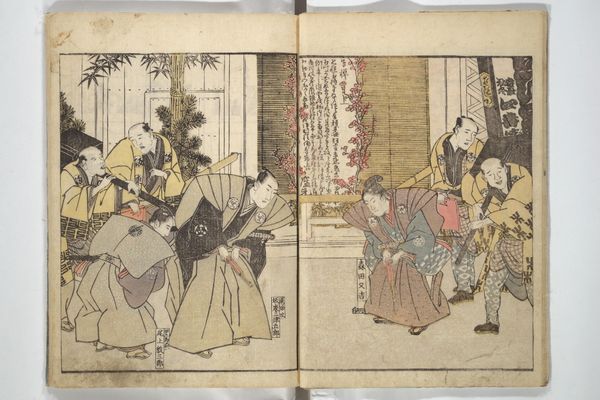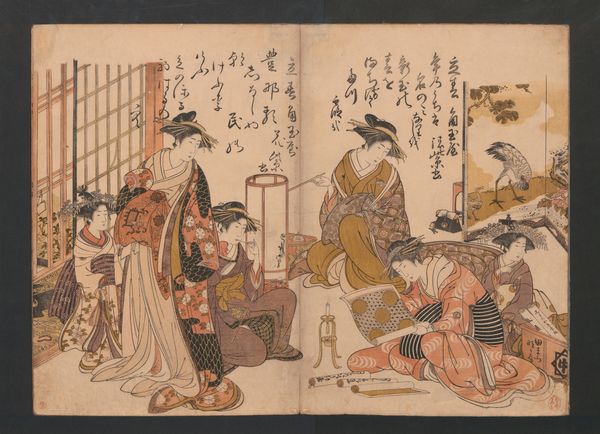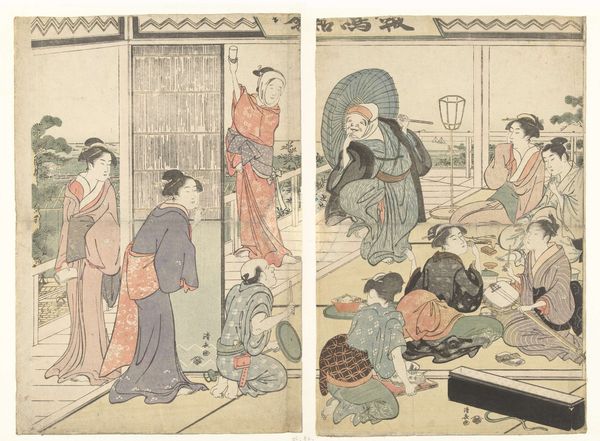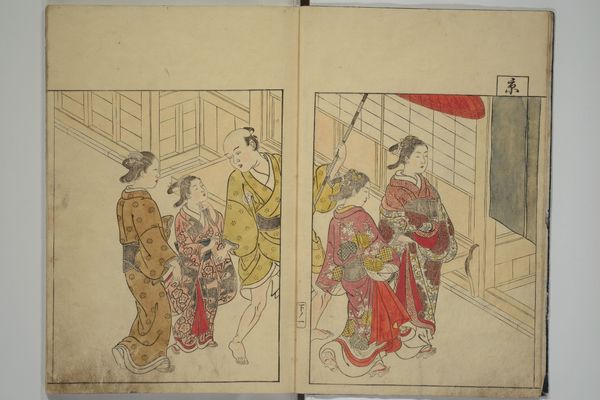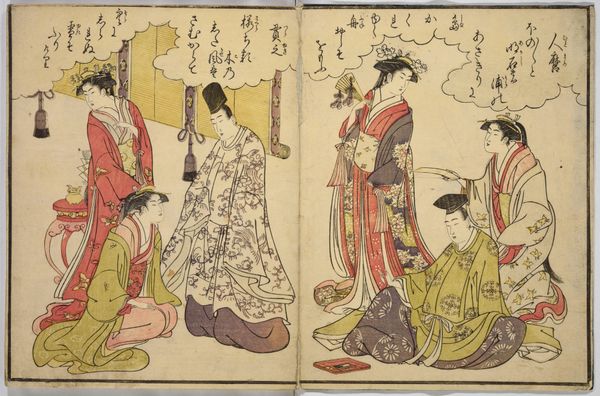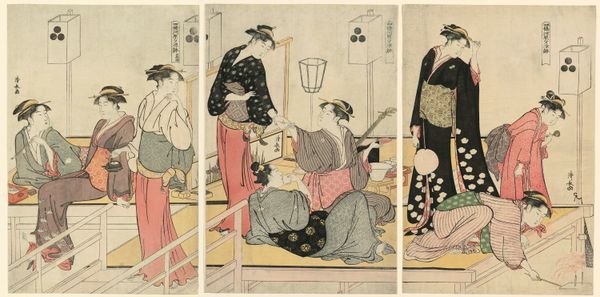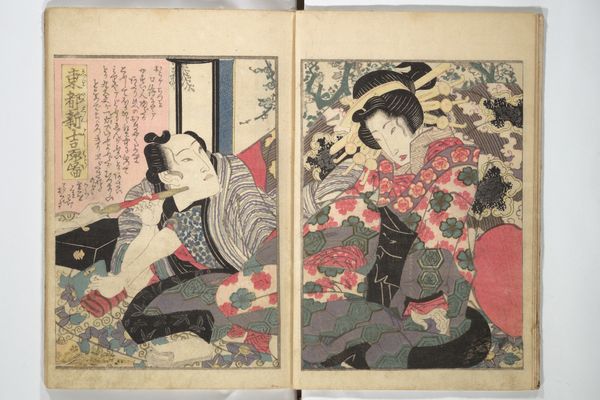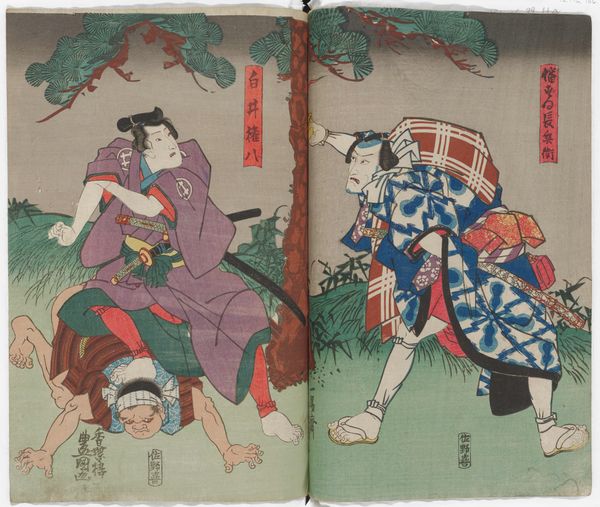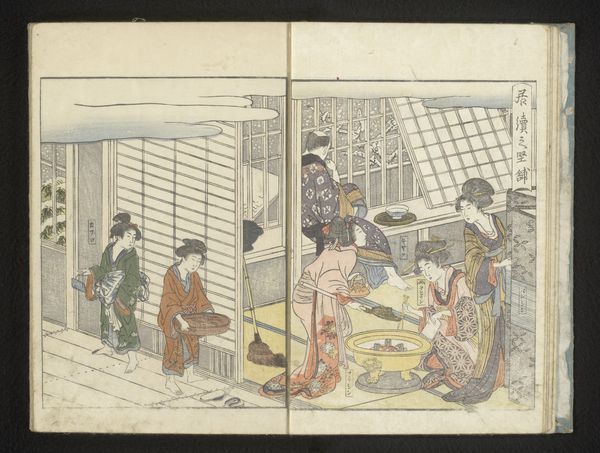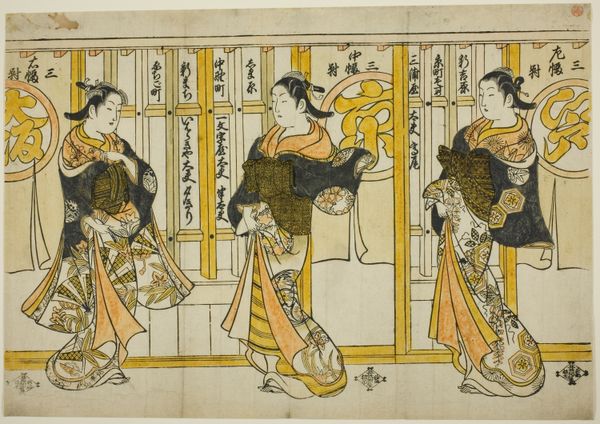![Amusements of Kabuki Actors of the “Third Floor” [Dressing Room] (Yakusha sangaikyō), by Shikitei Sanba by Utagawa Toyokuni I](/_next/image?url=https%3A%2F%2Fd2w8kbdekdi1gv.cloudfront.net%2FeyJidWNrZXQiOiAiYXJ0ZXJhLWltYWdlcy1idWNrZXQiLCAia2V5IjogImFydHdvcmtzLzM1MzRlOTkyLWJmMDEtNGM1YS1hM2EyLTQ4MWY4M2NhMjk1NS8zNTM0ZTk5Mi1iZjAxLTRjNWEtYTNhMi00ODFmODNjYTI5NTVfZnVsbC5qcGciLCAiZWRpdHMiOiB7InJlc2l6ZSI6IHsid2lkdGgiOiAxOTIwLCAiaGVpZ2h0IjogMTkyMCwgImZpdCI6ICJpbnNpZGUifX19&w=3840&q=75)
Amusements of Kabuki Actors of the “Third Floor” [Dressing Room] (Yakusha sangaikyō), by Shikitei Sanba 1801
0:00
0:00
print, woodblock-print
# print
#
asian-art
#
sketch book
#
ukiyo-e
#
figuration
#
woodblock-print
#
genre-painting
Dimensions: 8 1/2 × 6 in. (21.6 × 15.2 cm)
Copyright: Public Domain
This woodblock print by Utagawa Toyokuni I, titled "Amusements of Kabuki Actors," captures a scene of actors in their dressing room, a space teeming with both performance and the mundane. Note the bamboo, a recurring motif in Japanese art, often symbolizing resilience, flexibility, and longevity. Consider the bamboo's presence here, not merely as decoration but as a silent witness to the actors’ preparations, their transitions between persona and self. The bamboo appears in countless forms throughout history. In ancient China it was associated with scholarly pursuits and moral rectitude. Interestingly, the act of dressing and undressing bears resemblance to the donning and shedding of masks. In psychoanalytic terms, this space is liminal, a boundary between the conscious performance and the subconscious reality of the actor. The cyclical nature of performance—the recurring act of assuming and relinquishing roles—mirrors the bamboo's endless cycle of growth and renewal, suggesting the enduring power of theater and its ability to reflect and refract the human condition across time.
Comments
No comments
Be the first to comment and join the conversation on the ultimate creative platform.
